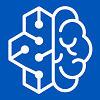General information
The first laboratory is on the first week of the semster, in the room IB.210 at 10:00. There is an announcement on this day regarding the laboratory measurements and the semster. The first laboratory measurement starts on the second week. All measurements starts at 8:30.
Groups
Students work in groups with 2 people. The gropus tkae the differnet measurements on different time, according to a schedule annonunced on the first week.
Laboratory measurements
1. MATSim traffic simulation
MATSim is an open source traffic simulation software written in Java. The measurement teaches how to use a traffic simulator. First, using configuration files, a simulation should be prepared. After this, using example codes, the simulation should be run in a programming environment.
In order to take this measurement successfully, basic Linux, Java and XML knowledge is required.
2. Programming microcontrollers and sensors - IoT 1.
The applicaitons in a smart city often build on communicating sensors, applications and services. As there could be many types of applications, there are so many communication methods. In a smart city, Internet of Things, IoT is playing a main role. Things are communicating over the internet. Internet is also the knowledge and wisdom based on the sensor data. IoT is Az IoT is more than communication on the internet, but first, on this measurement we are focusing on the communication. The students will create a sensor and actuator that has a virtual twin in an IoT platform. They are connected together.
Students should know, how to create a code in C/C++ language, however the measurement is supported by example codes. Moreover the students should access the following IoT platform:
- myDevices.com
In order to add sensors to the microcontroller, students should know the following basic technologies: analog connection, digital connection, USART, I2C, SPI. For the communication, the MQTT protocol should be known. Before the measurement, there is a test checking this knowledge! The preparation material is in the syllabus:
3. IoT platform használata - IoT 2.
At the previous measurement students made a sensor device and a virtual pair on the internet. Using the nyDevices platfrom the sensor data can be transmitted to the service and the service can control the device's actuators as well. With the current measurement, there are exercises around the IoT platform. Using the ThingSpeak IoT platform, sensor data should be analyzed and visualized. Moreover there will be a connection from IoT platform to other device, a smartphone.
During the laboratory, the analyzis and the visualization is done with Matlab, whihc is part of the ThinkSpeak platform. Students might need to relearn their basics Matlab knowledge.
4. Simulation with ROS and Gazebo
During this laboratory you will use ROS and Gazebo to control a simulated Husky Unmanned Ground Vehicle through a building. You will also have to modify the robot to add several sensors to it.
5. Augmented reality applications
During the laboratory measurement, your task will be to create an augmented reality application that could be used in a similar museum environment. Imagine that while visiting the Technical Museum or in the Electrotechnical Museum, one can see additional augmented reality contents while browsing the exhibition. In order the exhibition to be attractive, the user interface of the smartphone or tablet application and the contents (text, pictures, video) should be well prepared and designed. All preparation materials and the measurement instructions are available at http://smartlab.tmit.bme.hu/csapo/AR/.
6. Gesture control
The measurement talks about a gesture controlled Webcam. There are a webcam which have IP based control API and a Leap Motion device is available. The Leap Motion device can recognize and track the user's fingers, hands, arms and it can identify some built in. During the measurement, you can learn programming the webcam control and Leap Motion device. To solve the task C++ sample programs are reachable.

